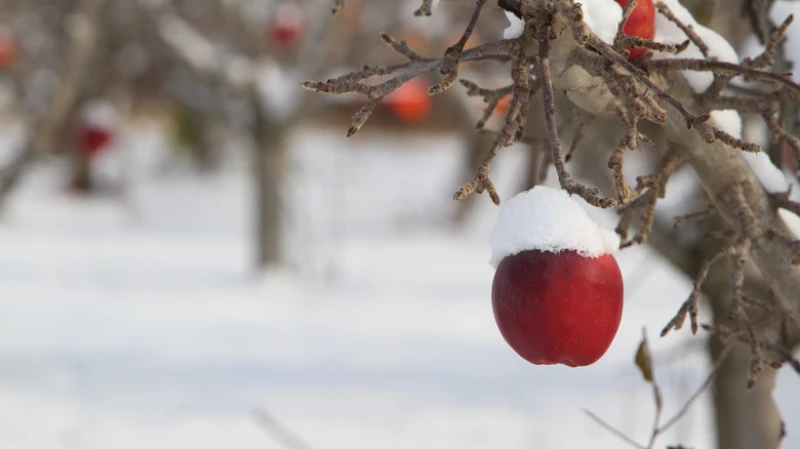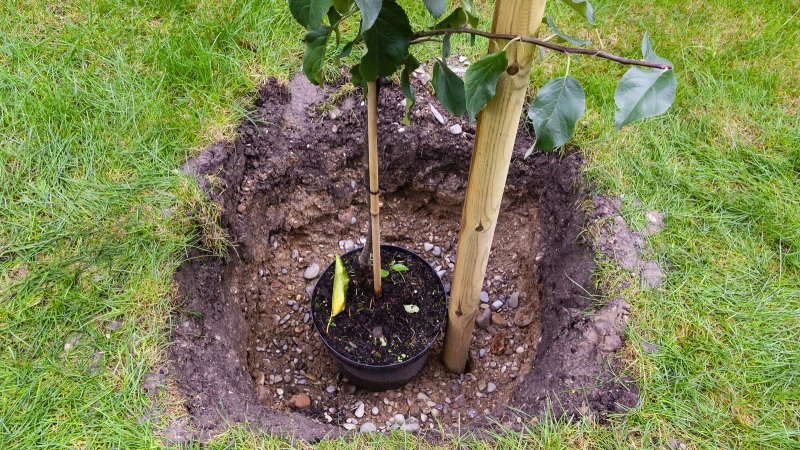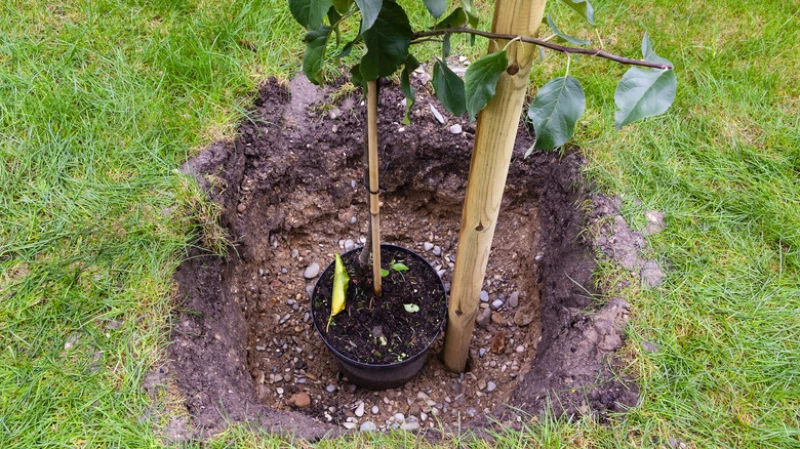Planting an apple tree can be a rewarding activity for gardeners. The anticipation of the tree eventually bearing fruit adds to the excitement. However, proper planting and care are essential for young apple trees to thrive. While apple trees can be planted at any time of the year, the ideal planting time depends on the local climate.
In regions with colder climates, mid-spring is the recommended time for planting apple trees, after the last frost. In areas with milder winters, early spring or late autumn are more suitable. It is important to choose a cold-hardy tree that is appropriate for the specific growing zone. According to The Old Farmers' Almanac, most apple trees thrive in USDA zones 3 to 8. These trees require a certain number of "chill hours" during winter in order to produce fruit. There are several apple tree varieties that are suitable for zone 8 and higher.
Planting an apple tree at the appropriate time ensures that the tree will get a good start in suitable conditions of temperature and weather. It also means the apple tree will have ample time to establish its growth cycle and become acclimated to its new environment before extremes of seasonal weather or any potentially extreme weather conditions arrive (such as freezing temperatures or ice in winter, or heat and drought in summer).
When to plant apple trees in cold growing zones
There's a wide range of apple trees available for planting, which can be purchased at nurseries and from online suppliers. Since the growing zone is an important factor to consider when selecting your trees, this information will usually be available to guide you. If you live in zone 6 or lower (there are plenty of apple trees hardy to zone 3, including some heirloom apple trees), you probably have cold enough winters that you want to plant your apple trees in mid-spring.
By mid to late April, the danger of a late frost is mostly past, but keep an eye on the forecast, as occasionally we see some wintry weather as late as May. But unless the temperatures are well below freezing for more than two or three days, planting in mid to late April is good timing for these cold-hardy trees. As long as the soil isn't frozen and it's easy to dig a hole, planting your apple tree in mid-spring is great timing to give it a good start.
Planting Apple Trees in Warmer Zones

Apple trees can be tricky to grow if you live in a growing zone that is USDA zone 10 or higher. You will have to search for a tree that will thrive in that zone; if there are not enough "chill hours" in the winter, your apple tree will not bear fruit. If you live in zone 8 or 9, there are some varieties you can try that need fewer chill hours (including Gala, a delicious apple that is fairly easy to find), but this means they blossom earlier, making them vulnerable in the event there is an occasional late spring frost. The recommended planting time for apple trees in warmer zones is a bit more flexible than for colder climates.
If your USDA zone is 6 or above, you can plant your apple tree in either late autumn or early spring. Most mail-order nurseries plan to ship apple trees in early spring. Waiting until late autumn may mean a smaller selection of trees available from mail-order companies, but you may be able to request a later shipping date if you communicate with the vendor.
It is important to check the weather forecast before planting your trees. Timing your planting according to the weather can have a significant impact on the success of your new plants. While planting before some rain is acceptable, heavy rain can disrupt the newly planted tree or cause waterlogging. To protect the roots from extreme weather conditions such as heavy rain or unexpected frost, consider adding a light layer of mulch over the newly planted tree.








